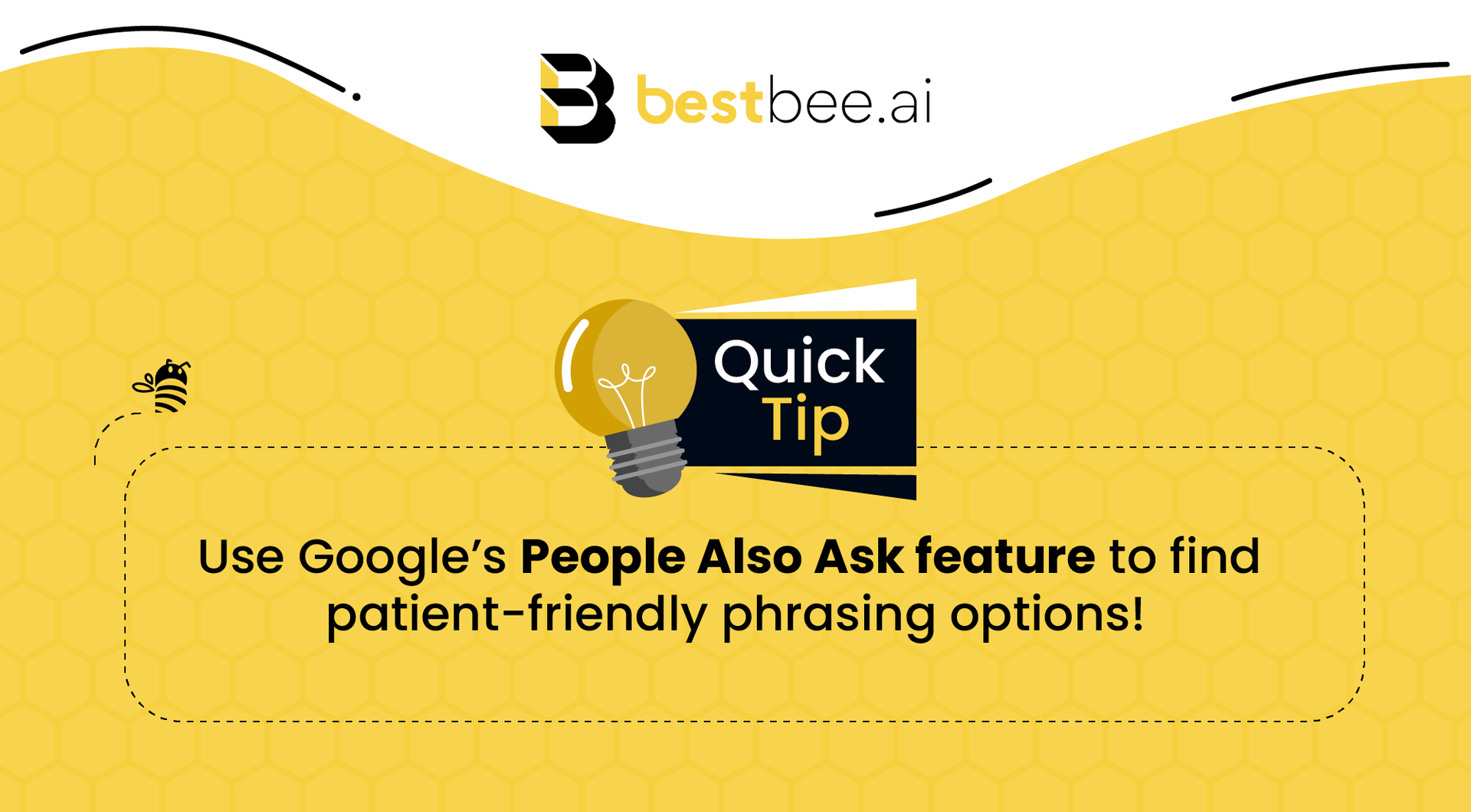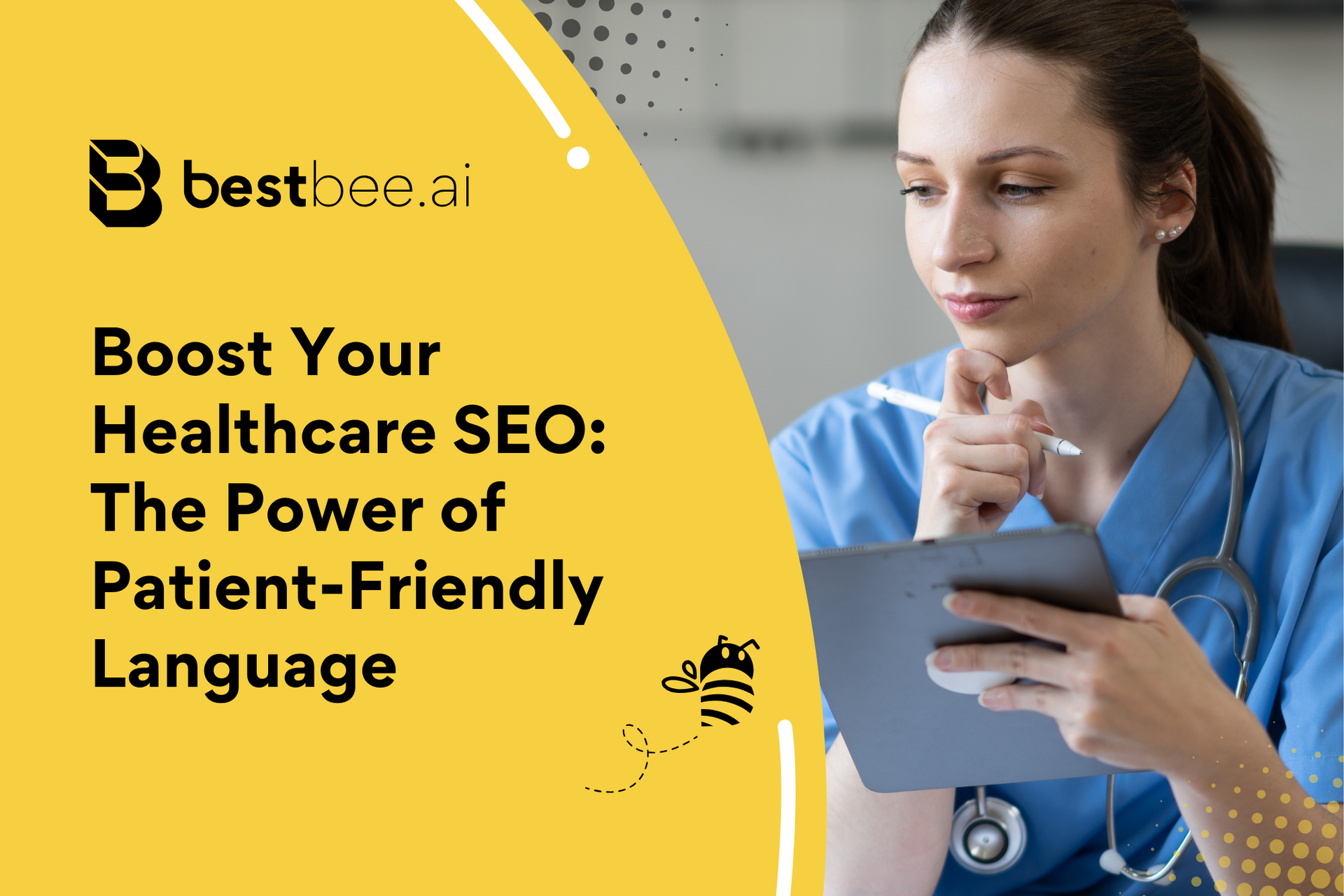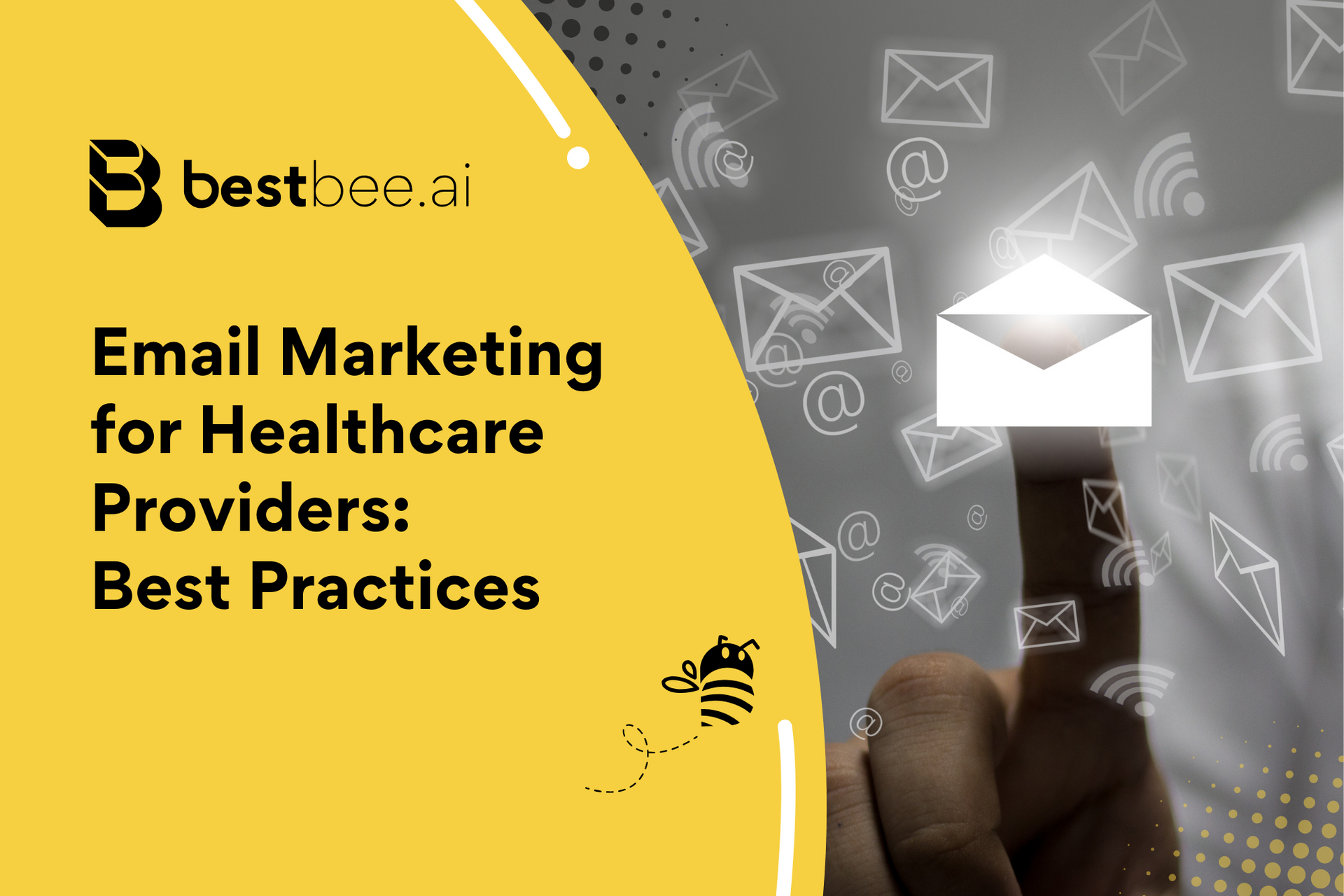Let’s face it: Patients don’t speak fluent medical jargon. When searching for answers online, they type sore throat, not pharyngitis. If your website doesn’t reflect this reality, then you’re likely missing out on valuable traffic and potential patients.
When it comes to online marketing, healthcare providers, clinic owners, and practice managers must think like their patients. But how do you do that? And where do you start?
In this article, we’ll explore why language matters in healthcare
content marketing, how search engine optimization (SEO) strategies benefit from relatable verbiage, and what actionable steps you can take to implement patient-friendly terms into your online content.
If you’ve been trying to grow your patient base but struggling to gain traction,
Best Bee
offers SEO and marketing strategy tips to help you speak your patients' language and attract more bookings.
Why Language Matters in Healthcare Marketing
Healthcare is full of complex terminology. While terms like myocardial infarction and hyperlipidemia are commonplace for providers like you, they’re not how the average patient describes a heart attack or high cholesterol, respectively. This disconnect can create barriers for patients seeking information and services online.
Using everyday language is essential because:
- It builds trust. Patients feel more comfortable and confident when they understand what they’re reading.
- It improves accessibility. Relatable terms ensure your content reaches a broader audience, including those with limited health literacy.
- It aligns with user intent. Google prioritizes content that matches people's search patterns, rewarding relatable language with higher rankings.
Google’s algorithms are designed to deliver the most relevant and user-friendly content. This means that using too much technical jargon can hurt your efforts to attract prospects to your website.
If you want your content to rank higher on search engines, use the terms your patients search for online.
How Using Relatable Language Boosts Your SEO Strategy
Patient-friendly language plays a pivotal role in healthcare SEO. At Best Bee AI Marketing, we leverage it to bridge the gap between complex medical terminology and the way patients actually search for information online.
Search engines, like Google, favor websites that provide clear, accessible, and relevant information. Here are a few benefits of using terms that resonate with everyday patients:
1. Increased Keyword Relevance
It’s no surprise that everyday terms like chest pain come up far more frequently in internet searches than their technical counterparts (i.e., angina).
By incorporating commonly used language, you align your content with highly-searched (or high-volume) keywords. This increases your likelihood of matching patient searches, enhances visibility, and drives organic traffic to your website.

2. Improved Click-Through Rates (CTR)
Relatable titles and meta descriptions are critical to capturing patient attention in search results. When someone searches for health information online, they’re often drawn to content that feels approachable and easy to understand.

3. Better Content Engagement
Once patients land on your page, relatable language keeps them there. Because the average American’s readability level is equivalent to a seventh- or eighth-grader, using shorter sentences and simpler terms can result in higher engagement rates.
When your content is easy to read and understand, patients are more likely to explore your website, schedule appointments, and contact your practice.
Best Practices for Incorporating Patient-Friendly Language
Using patient-friendly language in your content isn’t quite as easy as it sounds. It requires a strategic approach. Here are a few actionable tips you can work on, according to Best Bee’s SEO experts:
1. Know Your Audience
Identify the unique needs and characteristics of your target patient base. Are you serving a younger population, seniors, working professionals, or families? Each group may have different health literacy levels and communication preferences.
Understand your target demographic and tailor your language to match your audience. This ensures your content feels approachable and relevant, which increases engagement and trust.
2. Conduct Keyword Research
Patient-friendly language doesn’t happen by accident—you need data to guide it. Use tools like SEMrush, Ahrefs, or Google Keyword Planner to identify high-performing everyday terms relevant to your practice's services.
Focus on keywords that balance high search volume with low-to-moderate competition because these are more likely to drive traffic to your website. Additionally, look for long-tail keywords—phrases like “how to lower high blood pressure at home.” These often capture user intent more effectively than short, technical terms.

3. Simplify Without Sacrificing Accuracy
Strive for clarity without compromising on medical accuracy. Instead of crafting lengthy blocks of text filled with technical jargon, use bullet points, simple explanations, and relatable examples to break down complex topics.
However, you don’t have to replace every single technical term. You can find ways to pair them with their simpler counterparts.
For instance, you can write, “A
heart attack, also called a
myocardial infarction, occurs when the blood supply is reduced or cut off from the heart muscle.” This way, your content is accessible to patients while maintaining a professional and credible tone. It also builds trust by showing that you value both simplicity and precision in your communication.
4. Test and Optimize Your Content
Relatable, patient-friendly language is not a one-size-fits-all solution. What works for one audience may not resonate with another, which is why it’s important to continuously refine your content.
A/B testing is a powerful method for evaluating different approaches. You can compare two versions of a blog post—one using technical terms and another using patient-friendly language—and track metrics like click-through rates, bounce rates, conversions, and how long a reader stays on the page.
By analyzing these data points, you can identify which style resonates most with your audience and adjust your strategy accordingly.
Boost Visibility & Build Trust with Best Bee’s SEO Services

Patient-friendly language does much more than improve your practice’s communication—it’s a strategy for stronger online visibility and better patient engagement.
By simplifying your content to align with the terms patients actually search for, you can make your website more accessible, build trust, and drive higher traffic to your practice. From relatable titles to informative yet approachable blog content, every piece of your digital presence plays a role in improving your SEO performance.
At Best Bee AI Marketing, we specialize in creating content and implementing campaigns that bridge the gap between healthcare expertise and patient understanding. Our proven SEO strategies are designed to help your practice stand out in search results, connect with more patients, and grow your online presence.
Ready to see the difference Best Bee can make? Let’s work together to amplify your reach and take your healthcare marketing to the next level.
Quick Links
Quick Links
Quick Links
Best Bee AI Marketing | All Rights Reserved
Best Bee AI Marketing | All Rights Reserved











